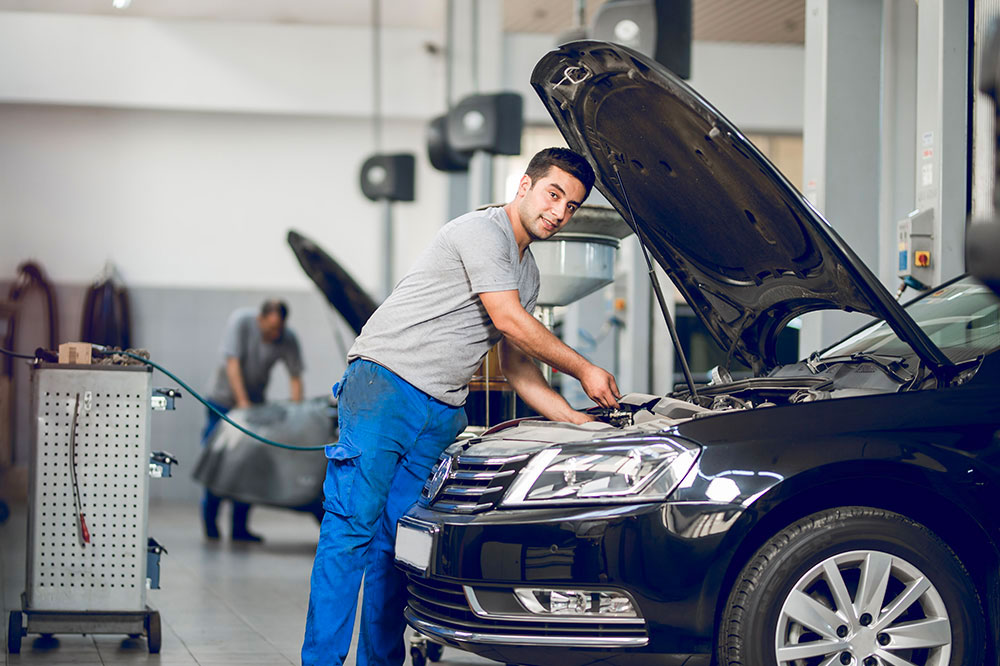9 common car maintenance mistakes to avoid

Car maintenance is an ongoing process. Any vehicle you buy, irrespective of the make, model, or brand, requires regular servicing, repairs, and upgrades to run smoothly. From the engine’s internal components to the external paint, there are hundreds of different tasks to be done periodically. Your vehicle warranty will cover a good part of the maintenance. However, first-time car owners unknowingly make these common mistakes that you should avoid at all costs.
Ignoring safety lights
There are several warning lights that flash on the dashboard to indicate engine failure, battery problems, and even electrical malfunctions. The manufacturer has installed these safety systems to prevent components from failing and causing an accident. So, when the check engine, oil, or battery light blinks once you turn over the ignition, take the vehicle straight to the repair shop or your car brand’s maintenance workshop. It may not necessarily be a major fix, but a repair that will prevent the car from breaking down completely. Routine checks and repairs might even be covered under your warranty if the vehicle is still practically new.
Ignoring tire pressure
Multiple factors lower tire air pressure and increase the risk of a blowout or rim damage while driving at high speeds. For example, freezing weather causes tires to lose up to 2 lbs. of air pressure for every ten degrees drop in outdoor temperature. Losing air pressure makes controlling the vehicle at high speeds extremely difficult. Also, flatter tires force the vehicle to guzzle down more fuel as the engine generates more torque to compensate for the tire instability. Modern-day vehicles come with dedicated air pressure sensors and tire pressure monitoring systems that indicate that it is time for a refill.
Failing to get a wheel alignment done
Wheel alignment is a critical maintenance task that should be done at least a couple of times if you drive your vehicle regularly. The terrain level, cornering, driving speed, and driving style are all factors that affect the wheel’s alignment. If you notice your vehicle pulling to one side and you have to exert more force to control the oversteer or understeer, chances are either of your four wheels is out of alignment. Wheel misalignment also causes the tires to wear out unevenly and, as a result, makes it difficult for you to drive your car. Depending on the manufacturer, wheel alignment and tire rotation should be done as recommended for the vehicle’s make and model.
Failing to change oil
Engine oil, transmission fluids, lubricants, and other coolants are used across the vehicle from the hood to the boot. These oils prevent connected moving components from overheating due to friction. But with repeated use, sludge forms, affecting the viscosity of the oil. So, an oil change is necessary after driving the vehicle for a certain number of miles. Modern-day automobiles can run up to 7,000 miles before you consider an oil change. However, extending this maintenance task beyond the suggested timeline is not advisable. Consider replacing the motor oil regularly if you don’t want your vehicle to break down in the middle of peak traffic or even in the middle of nowhere with no AAA to call for help.
Ignoring brake issues
Braking systems are usually powered by hydraulics and a small pump that regulates the fluid going in and out of the brake pads or drum. When you drive for extended periods and use the brakes frequently, these components overheat and cause friction. The friction leads to early wear, affecting the effectiveness of the brakes. When you hear a consistent grinding noise while applying the brakes or feel the brake pedal give more way than necessary, get the brakes checked at the earliest. Experts recommend changing the brake pads every 50,000 miles driven since modern-day pads and calipers are made with heat-resistant materials that last a long time.
Ignoring the filters
As you know, internal combustion engines require a mixture of compressed air and fuel to ignite properly and generate the force that pushes the pistons. The air filter is a critical engine component that filters out all debris and dirt before the air enters the engine. It even pumps out hot air from the engine exhaust and repeats the process until the engine is running. This filter also needs regular cleaning and replacement occasionally to ensure no external debris clogs the components. A faulty filter can prompt the check engine light to go berserk even when the engine is functioning properly. Similarly, you should also check the fuel filter that performs that same function to ensure no debris clogs the pistons, causing the engine to stall.
Giving your car for servicing to unfamiliar garages
Getting your vehicle serviced by a qualified technician working at an authorized brand service center is advisable. Not all garages have the tools and technicians to service the car properly when you own and drive specialty vehicles. You don’t want someone not qualified or confident to service an expensive engine and accessories installed in the vehicle. Don’t be stingy when it comes to spending money to maintain your vehicle.
Failing to buy genuine parts
Genuine brand or manufacturer parts are costly. But installing cheap knockoffs bought online or from unfamiliar garages raises major safety concerns. You should absolutely avoid buying duplicate or refurbished parts, including spark plugs, filters, and brake pads, among other critical engine components. Saving a few bucks here and there today can cost you thousands of dollars in major problems that develop because of the same knockoff components.
Skipping regular washing
Don’t skip the car wash. Dust, grime, extreme weather, and environmental pollution are all factors that affect the exteriors of vehicles. Allowing these harsh pollutants to accumulate on the surface can cause the paint job to erode and expose the metal to rust. Premature rusting affects the structural integrity of the vehicle. The bottom line is to take some time out to have the vehicle cleaned at a professional car wash.